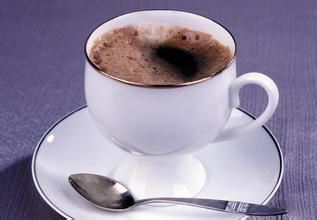Introduction to the blending of Italian Coffee which coffee varieties are more suitable for blending
In 1870, Joel, a grocery store salesman from Kentucky and the founder of Maxwell, felt that the coffee did not meet his requirements, so he began to try to mix different coffee beans. When he came up with a taste to his satisfaction, he took it to the prestigious Maxwell Hotel in Tennessee. This is a hotel with the traditional characteristics of hospitality in the American South. Before long, Joel's coffee, with its unique flavor, became the most popular product at the Maxwell Hotel, and the coffee roaster here became the largest in the United States. As a result, the Maxwell Hotel gave its elegant and unique name to Joel's coffee.
Highlighting the good flavor and eliminating the bad things will also be the purpose of blending, want a more balanced cup of coffee, want a cup of acidity, strong mellow thickness and great plum fruit aroma and great fat? That matching must be a shortcut, for commercial operation, such a unit cost is high and it is difficult to find.
Another theory is to mix different coffees according to their performance in cups with different roasting degrees. Matching according to different baking degrees is carried out under such understanding and understanding. But it also has a high requirement for the blender to accumulate the knowledge of baking, and the roasting technology needs to be skillful in order to make a good comprehensive coffee.
Both theories have their own reasons, but they also have their own limitations. The first one stubbornly divides coffee into different types, but ignores the performance of coffee flavor under different roasting degrees, while the second does not consider that each kind of coffee has its own most suitable roasting degree to achieve its own characteristics.
Blending is not a simple addition and subtraction. Blending requires baristas to have a correct understanding of the characteristics of each kind of coffee and the best flavor performance at which degree of roasting. On this basis, after continuous matching experiments, we can slowly find out the most suitable matching formula. But it should be said that there is no fixed rule on what proportion of A coffee must be mixed with what proportion of B coffee and C coffee is the best mixed coffee.

Important Notice :
前街咖啡 FrontStreet Coffee has moved to new addredd:
FrontStreet Coffee Address: 315,Donghua East Road,GuangZhou
Tel:020 38364473
- Prev

Introduction of Coffee treatment introduction of semi-washing honey treatment of coffee beans by drying method
Water washing is the most popular treatment method at present, and most boutique coffee beans will choose water washing method. Washing coffee refining process: harvesting storage tank (removal of impurities and immature beans) pulp removal machine (removal of pulp and impurities) fermentation tank (removal of mucous membrane attached to endocarp) washing pool (selection of light and hard beans) sun drying field (or dryer) sheller (
- Next

How to grow coffee trees Which countries are most suitable for growing coffee Coffee growing conditions Introduction
Coffee trees bloom for the first time about three years old, white five-petaled tubular flowers, with a faint jasmine fragrance, dense inflorescences arranged in clusters. Flowers wither two or three days after flowering and begin to bear fruit a few months later. The fruit is a stone fruit, about 1.5 cm in diameter, initially green, then gradually yellow, mature into red, and cherry is very similar, because
Related
- Beginners will see the "Coffee pull flower" guide!
- What is the difference between ice blog purified milk and ordinary milk coffee?
- Why is the Philippines the largest producer of crops in Liberia?
- For coffee extraction, should the fine powder be retained?
- How does extracted espresso fill pressed powder? How much strength does it take to press the powder?
- How to make jasmine cold extract coffee? Is the jasmine + latte good?
- Will this little toy really make the coffee taste better? How does Lily Drip affect coffee extraction?
- Will the action of slapping the filter cup also affect coffee extraction?
- What's the difference between powder-to-water ratio and powder-to-liquid ratio?
- What is the Ethiopian local species? What does it have to do with Heirloom native species?

